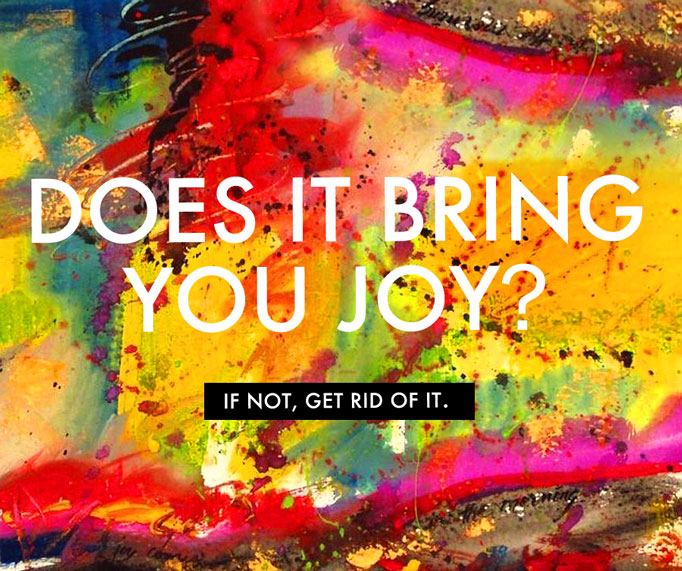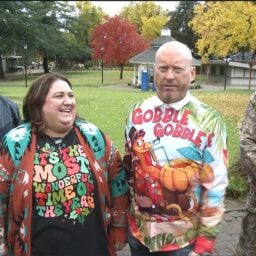Recently I’ve been getting rid of anything decorative in our house that doesn’t bring joy. I’ve been inspired by Marie Kondo!! Y’all may know her from Tidying Up on Netflix…she is a game changer. I still have a ways to go when it comes to going thru everything and deciding what to keep and what needs to go! But the process so far is very freeing!!!!
When I came across this blog from Marc and Angel about tiny changes to make in your life that will serve you well, it reminded me of decluttering your house, you also gotta declutter your mind and emotions! Hope this helps you with whoever you are in your journey!
21 Tiny Changes You Can Make in Your Home to Make Life Simpler in 2021
1. Get your head straight about what matters, and what in your home is distracting you from what matters. For most of us, our excessive physical possessions are not making us happy. Even worse, they are taking us away from the things that do. Once we let go of the things that don’t matter, we are free to pursue all the things that really do matter. And sometimes, minimizing physical possessions means an old dream must die. But this is not always a bad thing. Because sometimes, it takes (mentally and emotionally) giving up the person we wanted to be in order to fully appreciate the person we can actually become.
2. Remove decorations that no longer inspire you. Just because something made you happy in the past doesn’t mean you have to keep it forever. Your life has moved on—maybe it’s time for the decoration to do the same. Remove the knickknacks and pictures that no longer inspire you. Or the decoration you bought that one time because it was on clearance. Keeping just the items that mean the most to you will help them to shine.
3. Reject the convenience fallacy. There are certain places in our homes we tend to leave items out for convenience—a stack of favorite DVDs in the corner, appliances on the counters in the kitchen, toiletries beside the bathroom sink. By leaving these things out, we think we’re saving time and simplifying our lives. That’s the convenience fallacy. Sure, we might save a couple of seconds, but the other 99.9 percent of the time, those items just sit there creating a visual distraction. If you’re not using your convenience items at least 50 percent of the time they’re out, keep them in a cabinet or drawer and out of sight.
4. Distinguish between simplifying (or minimizing) and tidying up. Just because a room is tidy doesn’t necessarily mean it’s uncluttered or serves its purpose. Well-organized clutter is still clutter. Never organize what you don’t even use and can easily donate to someone who will.
5. Count the “clutter cost.” It can be hard to get rid of things you spent a lot of money on. But keeping things you no longer wear, use, or love also has a cost—every object carries a burden as well as a benefit. The burden or “clutter cost” is the money, time, energy, and space an object demands of you. If you’re having trouble letting go of a pricey item you don’t use—or any item for that matter—remember to consider the benefit-to-burden ratio before you decide to keep it.
6. Free up closet space. One of the biggest complaints people have about their homes is that the closets are too small. If you’ve been thinking that you need bigger closets, maybe all you need to do is right-size your wardrobe—and your closet will feel bigger overnight.
7. Donate clothes you don’t love. After decluttering your closet, you’ll find more space and peace each morning when you get ready, rather than facing stress and indecision. Plus, donating unused clothing to a local charity is a simple but meaningful way to help others.
8. Declutter duplicates. I call this a minimizing accelerator because it’s one of the easiest things you can do to make quick progress. Open your linen closet, for example. How many extra pillows, sheets, and towels do you really need? Other good candidates for eliminating duplicates include cleaning supplies, gardening tools, fashion accessories, home office supplies, toys, books, and kitchen items. Keep your favorite in each category—the ones you actually use—and get rid of the rest.
9. Clear your dining room table. Is your dining room table a depository for mail, backpacks, keys, and other things that are in the process of going from one place to another? If so, chances are that using it for a meal may seem like more work than it’s worth. Put the items away where they belong. Make your tabletop a clean, open and inviting space.
10. Invite the right people to gather at your dining room table, often. These are the people you enjoy, who love and appreciate you, and who encourage you to improve in healthy and exciting ways. They are the ones who make you feel more alive, and not only embrace who you are now, but also embrace and embody who you want to be. The bottom line is that your decluttering efforts have given you more space to share stories, experiences, hugs and laughs with family, good friends, and close neighbors. Don’t forget to make it count.
11. Practice gratitude, in your home, daily. At least once a day, it’s good to pause in your pursuit of a simpler and more organized life, look around, and simply appreciate the life you’re presently living. As Marc and Angel have shared in their inspiring bestseller, 1,000 Little Things Happy, Successful People Do Differently: “Look around, and be thankful right now. For your health, your family, your friends, and your home. Nothing lasts forever.”
12. Take down signs that don’t sincerely vibe with your present values. I know a woman with a sign in her laundry room that says, “It’s tough living in the fast lane when you’re married to a speed bump.” I get the humor, but I wonder how reading that sign every day might affect her approach to her marriage, even in small ways. If you’re going to put words up on your walls, don’t you want them to inspire you and call you higher instead?
13. Calm a space for reading and being at peace. Even if you aren’t up for decluttering an entire room, you can “calm” a space. You calm a space when you minimize distractions. Choose a favorite chair and declutter everything around it. Remove anything from the floor that isn’t furniture. Clear the surface of side tables or a coffee table by removing or storing remotes, pet toys, kid toys, hobby items, old newspapers/magazines, mail, books, etc.
14. Clean out your entertainment center. These large pieces of furniture often harbor lots of small items we no longer need. Take out old electronic components, cords you don’t need, and discs and games nobody uses. Get rid of them by recycling responsibly, arrange the devices you do use in an eye-pleasing display, and hide their cords as much as possible.
15. Pare down your beauty and grooming supplies. I don’t know how big your bathroom is, but get rid of the clutter and I guarantee it will seem more spacious and peaceful to be in. Empty out the cabinets and drawers. Separate beauty tools (hair dryer, styling iron, savers, etc.) from beauty supplies (make-up, lotion, aftershave, etc.). Eliminate duplicates, throw out anything that’s broken or old, and get rid of items you no longer use. Then wash your storage containers and organize what you’re going to keep.
16. Tackle a junk drawer. Most of us have one. It’s the default resting place for small items that have no better place to be. Or for things we think might have some use but we can no longer remember what it is. Chances are good you can toss out most of what’s in there and never miss it.
17. Clear space for your car in the garage. A garage is not serving you well if it’s not serving its purpose, which is to house your car. That’s not to say that there’s anything wrong with using a garage for storage, but it’s possible to go too far with it—and a lot of us do. Get rid of all the obvious candidates for decluttering—odds and ends and leftovers, kids’ unused playthings and sporting equipment, duplicate tools, spare parts, etc.
18. Set physical boundaries for your kids. Give your kids a certain amount of space and allow them to manage it how they want. For example, in our garage, my wife and I keep one shelving unit and one plastic bin. The kids store their outdoor toys on the shelves and keep balls in the bin. When things begin to overflow, we ask them to make decisions about what to keep and what to get rid of. The same principle applies to a bedroom or a toy basket.
19. Leave space between everything you do in your home, too. Clear a little extra space between your personal tasks and obligations. Take a break to stretch, take a short walk outside, drink a glass of water, perhaps do some simple deep breathing exercises. Enjoy the (emotional and physical) space you’ve created for yourself in your home, and breathe. Remember, your overarching goal is living a life uncluttered by most of the things people fill their lives with, leaving you with space for what truly matters. A life that isn’t constant busyness, rushing and stress, but instead deliberate contemplation, creation and connection with people and activities you love.
20. Let go of mental clutter too. Life is just too darn short. Do your best to let go of all the purposeless drama, aimless time-wasters and mental clutter that keeps getting in your way. Again, it’s time to focus more on what matters in the year ahead, and let go of what does NOT.
21. Be less “busy” and more purposeful in 2021. As Marc and Angel said in one of their recent email newsletters, “There’s a big difference between being busy and being effective. Don’t confuse motion and progress. A rocking horse keeps moving but never makes any forward progress. So, try not to be the rocking horse in your personal life in 2021.” 😉 https://www.marcandangel.com/2020/12/30/21-tiny-changes-you-can-make-in-your-home-to-make-life-simpler-in-2021/









